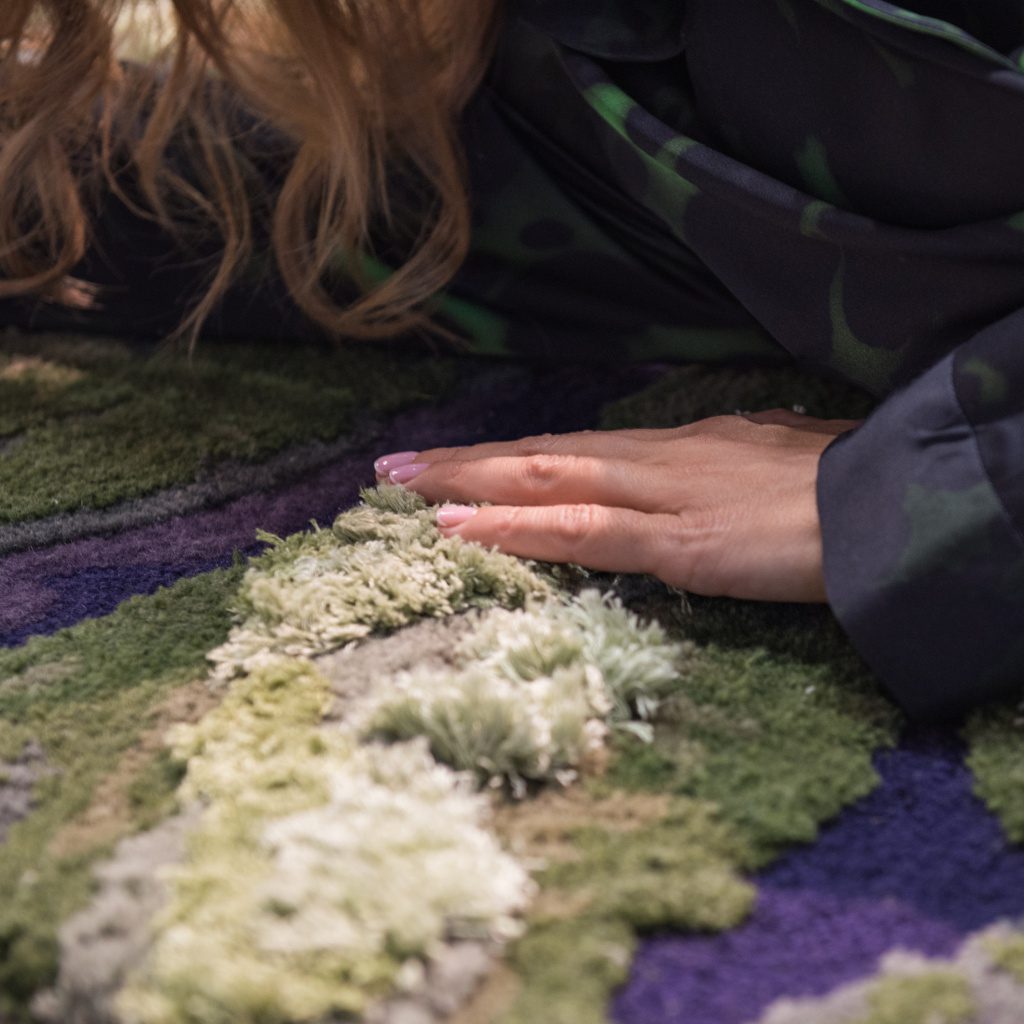
Margo Trushina has extensive experience exhibiting internationally: her works were presented at the Royal Academy of Arts (London), Museum of Modern Art (Turin), 5th Moscow Biennale of Contemporary Art, SFER IK Museum (Mexico) and many others. Her artistic practice reflects on the latest discoveries in the field of neuroscience, environmentally oriented practices and sustainability. Current ecological issues and challenges of our time – melting ice, the disappearance of plants, animal mutations, – become a topic for reflection and research for an artistic answer.
Tapis Rouge: What inspires you while approaching a new work?
Margo Trushina: I am inspired by travelling and exploring new places, particularly being in the natural environment, which is an important part of my creative process. Nature’s ability to thrive, adapt and regenerate itself is phenomenal, and it often serves as a primal source of inspiration for my work. The landscape could be a unique reflection of certain thoughts and feelings, and I believe we can find similarities in the processes in the wilderness. In my opinion, nature has all the answers. It seems like I “plant the seeds” of new work in the fields, mountains or seas. Then, they “grow” into my studio, taking various shapes, materials, and meanings.
For example, Planet Earth rugs collection was conceived in Iceland, a country with a range of dramatic and breathtaking scenery, where beauty and sustainability go hand in hand. Iceland is known as the most sustainable country on Earth, powered by 100% hydro and geothermal energy sources. The Nordic tradition of functional design with a minimalist aesthetic beauty, and its leadership in sustainable living, inspired this collection.
The Icelandic landscape, famous for its volcanic peaks, majestic glaciers and spectacular waterfalls, fascinated me with its unique structure, appearance and ways of growing and living. The experience of stepping on the mossy surface made me think of the origin of the idea of a carpet itself. Moss fields look like a “planetary carpet” that dates back 450 million years, and have survived and thrived through a range of drastic climate changes. Comprised of 15,000 – 25,000 species, they occur on every continent and in every ecosystem habitable by plants that use sunlight for energy. Often overlooked, these tiny plants have incredible properties. From hot deserts to damp caves, they can survive in extreme conditions and play an important role in biodiverse habitats across the world. Mosses are important components of the vegetation in many regions of the world, and they make up a major part of the biodiversity in moist forest, wetland, mountain and tundra ecosystems.
Mysterious Moss rug, Inspired by the textures found in Icelandic wilderness, is one of a series of photorealistic rugs that showcase the beauty and resilience of moss. Using this unique material as the centerpiece of the collection not only celebrates the natural world but also brings attention to sustainability and the importance of protecting our planet’s biodiversity. It represents the passage of time, evergreen nature and stability.

TR: In your opinion, how will the living spaces and their functions change in the future?
MT: As we continue to evolve and adapt to new technologies, it’s only natural that our living spaces will undergo significant changes in the future. We can expect to see more seamless integration of smart home technology, which will enable us to control various aspects of our homes with ease, from lighting to temperature to security.
But it’s not just about technology. The future of living spaces will be about creating a holistic and mindful living experience that caters to our physical, emotional, and spiritual needs. I believe Future living will be smart, simple and natural. Homes will not just be a place to live, but rather a sanctuary where people can thrive and lead fulfilling lives. I would imagine a house as a temple and the life in it as a ritual!
The future of living spaces will also prioritize sustainability and eco-friendliness. We will see more use of natural materials and designs that incorporate natural elements, such as indoor gardens or water features. The aim will be to create spaces that are both aesthetically pleasing and environmentally conscious. Moreover, as our awareness of mental health and well-being continues to grow, the design of living spaces will focus more on creating environments that promote relaxation, comfort and a sense of calm. Lighting, colour schemes, and furniture choices will all be considered in terms of their impact on our mental and emotional state.
